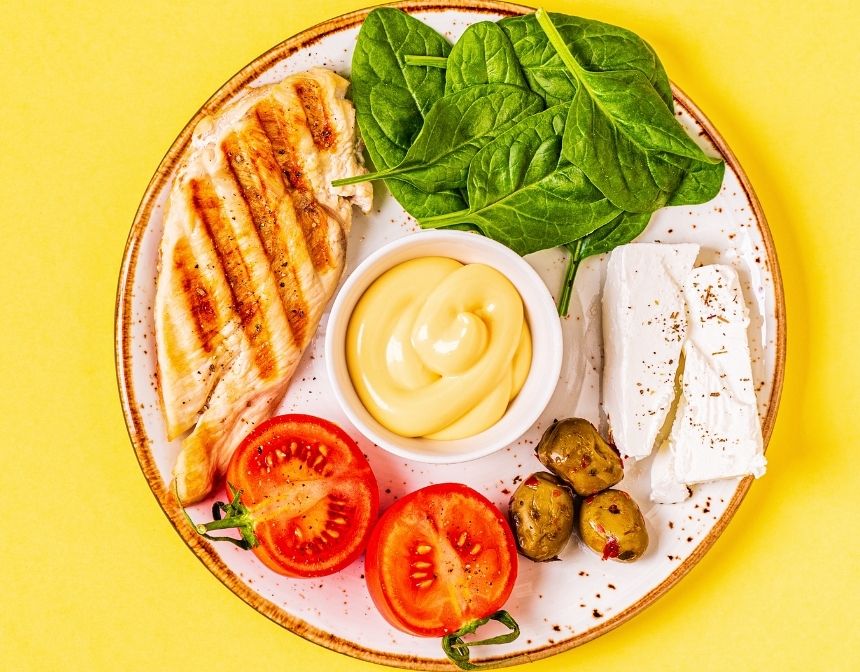Origin of Purslane Salad with Cherries and Feta
The Purslane Salad with Cherries and Feta is a delightful fusion of ingredients widely celebrated in different regions around the Mediterranean. The dish showcases the versatility of purslane, a succulent plant with a rich history in culinary traditions across the world. Originating from Persia, purslane has been a staple green in Mediterranean countries, recognized for its peppery flavor and notable health benefits, rich in Omega-3 fatty acids and antioxidants.
Cherries and feta cheese, integral to this salad, are also deeply rooted in Mediterranean cuisine. Cherries have been relished since ancient times in the region, celebrated for their sweet and tart flavor, adding a vibrant taste to any dish. Feta, a brined curd cheese traditionally made in Greece, contributes a creamy texture and tangy taste, balancing the sweetness of the cherries and the peppery notes of purslane, creating a harmonious flavor profile.
This salad exemplifies the essence of Mediterranean cuisine – it’s a symphony of fresh, high-quality ingredients, each bringing its unique flavor and texture to the table. The simplicity of the recipe speaks to the Mediterranean culinary philosophy of celebrating natural flavors and the joy of seasonal eating. It’s a refreshing and nutritious dish, perfect for those who appreciate the vibrant and diverse palate of Mediterranean cuisine, inviting everyone to explore the wonderful tastes this region has to offer.
How Do You Prepare Purslane For Eating?
Preparing purslane for eating is quite simple and similar to preparing other leafy greens. Here are the steps to get your purslane ready for consumption:
1. Harvesting or Selecting:
- If you’re harvesting purslane from your garden, pick the tender, top leaves and stem tips. Avoid stems that are thick and woody.
- If buying, choose fresh, green, and crisp purslane. Avoid any that appears yellowed, wilted, or slimy.
2. Washing:
- Rinse the purslane thoroughly under running water to remove any dirt or grit.
- Since purslane is succulent and can hold a lot of dirt, you might need to wash it a couple of times.
- Shake off the excess water or use a salad spinner to remove it.
3. Trimming:
- Trim off the roots and discard any yellow or wilted leaves.
- If the stems are thick and tough, they can be discarded or used in soups and stews where they will have time to soften.
4. Chopping:
- Chop the purslane into your desired size, depending on your recipe.
- You can use both the leaves and tender stems.
5. Cooking or Using Raw:
- Purslane can be enjoyed raw in salads, adding a peppery and slightly tangy flavor.
- It can also be sautéed, steamed, or added to soups, stews, and stir-fries.
6. Storing:
- If you have more purslane than you can use immediately, store it in the refrigerator in a produce bag with a paper towel to absorb any excess moisture. It should stay fresh for several days.
Remember that purslane is versatile, so feel free to experiment with it in various dishes. Whether enjoyed raw or cooked, it makes a nutritious and flavorful addition to your meals.
Does Purslane Taste Good?
Yes, many people find purslane to be quite tasty! Purslane has a slightly tangy, peppery, and lemony flavor, which can add a unique and refreshing taste to a variety of dishes. Its succulent leaves and stems also provide a satisfying crunch, making it a delightful ingredient in salads and other raw preparations.
In addition to its pleasant taste, purslane is highly nutritious, containing Omega-3 fatty acids, vitamins (such as Vitamin A, Vitamin C, and some B vitamins), minerals (including magnesium, calcium, potassium, and iron), and antioxidants.
The flavor of purslane pairs well with a variety of ingredients, such as citrus fruits, tomatoes, cucumbers, yogurt, feta cheese, and fresh herbs, making it a versatile addition to the culinary repertoire.
Keep in mind that taste is subjective, and what is delicious to one person may not be to another, so it's worth trying purslane for yourself to see if you enjoy its unique flavor and texture!
Does Purslane Have To Be Cooked?
No, purslane does not have to be cooked. It can be enjoyed both raw and cooked, depending on your preference and the dish you are preparing.
Raw: When eaten raw, purslane adds a crisp texture and a peppery, lemony flavor to salads, sandwiches, wraps, and salsas. It’s a popular ingredient in Mediterranean and Middle Eastern cuisines, often used fresh in salads or as a garnish.
Cooked: Cooking purslane softens its texture and mellows its flavor. It can be sautéed, steamed, or added to soups, stews, stir-fries, and other dishes. Cooking purslane makes it a versatile green that can be used in a variety of culinary applications.
Whether you choose to eat purslane raw or cooked, it offers a host of nutritional benefits, including being a good source of Omega-3 fatty acids, vitamins, and minerals. Enjoy experimenting with purslane in different dishes to experience its unique taste and texture in various culinary creations!
Who Should Not Eat Purslane?
Purslane is generally safe for most people to eat and offers various nutritional benefits. However, there are a few considerations and specific groups of individuals who should exercise caution:
Individuals with Kidney Stones: Purslane contains oxalates, which are natural substances found in some foods. People with a history of calcium oxalate kidney stones should be cautious with high-oxalate foods and may want to limit their consumption of purslane.
Pregnant and Breastfeeding Women: While purslane can be nutritious, there is limited research on its safety for pregnant and breastfeeding women. It’s advisable for them to consult a healthcare professional before incorporating a significant amount of purslane into their diet.
People with Allergies: Individuals who have allergies to foods within the Portulacaceae family should be cautious, as they may also be allergic to purslane.
People on Medication: Purslane may interact with certain medications, such as lithium, due to its diuretic properties. People on medication should consult their healthcare provider to ensure that consuming purslane won’t interfere with their treatment.
People with G6PD Deficiency: Purslane has been reported to have a high content of vitamin K, which can affect blood clotting. People with G6PD deficiency, a genetic disorder affecting red blood cells, should consult a doctor before consuming purslane.
It’s always a good practice for individuals with underlying health conditions or those on medication to consult with a healthcare professional or a registered dietitian before making significant changes to their diet, including adding new or unfamiliar foods like purslane.











































